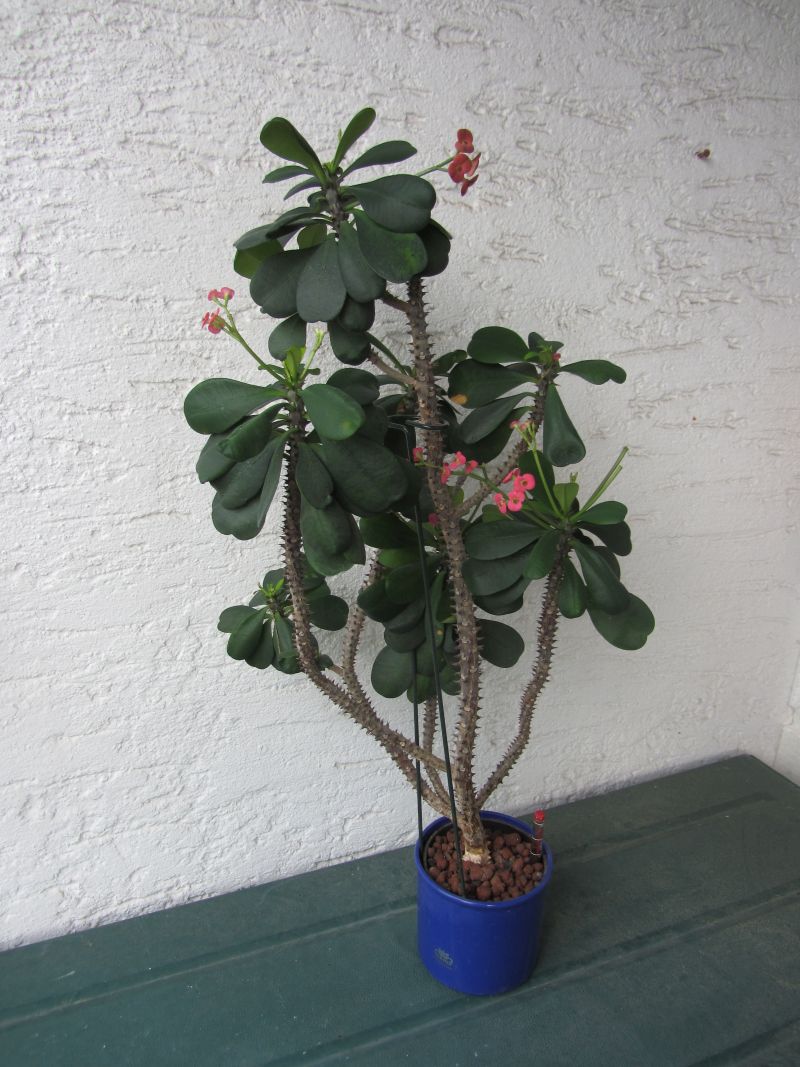Many houseplants can indeed be classified as perennial herbaceous plants, fitting the definition of perennials. Although they typically originate from warmer regions, those people who tend to their gardens in the summer often enjoy the company of "green friends" indoors as well. For many years, there has also been the option of hydroponics for private use. Therefore, here is a brief guide:
Hydroponics - Brief Guide
Hydroponics refers to the cultivation of plants indoors or in greenhouses without soil. Instead of soil, the plants are placed in expanded clay pellets. Additionally, the culture pot contains a nutrient-rich aqueous solution that nourishes the roots. A water level indicator shows how much liquid is present, and it can be replenished as needed.
The most crucial aspect for healthy hydroponic plants is protecting the roots from rot.
Rotting occurs when soil, decayed leaves, fallen flower remnants, or street dust enter the cultivation pot. Rainwater is therefore unsuitable for watering, as it contains dust, flower pollen, fungal spores, and other organic contaminants. Additionally, the transition of soil-cultured plants to hydroponics is often unsuccessful because it is impossible to completely wash out the soil.
Hydroponic systems cannot be placed outdoors in the summer. However, they are highly suitable for indoor environments, particularly favored in offices, as they require only occasional monitoring of the water level.
There are two systems for nutrition:
.
©Hannelore Goos 2014
A several years old
crown-of-thorns
(Euphorbia milii) flowering in hydroponic.
crown-of-thorns
(Euphorbia milii) flowering in hydroponic.
1. Nutrient solution
One purchases an appropriate hydroponic fertilizer, dilutes it with distilled water according to the instructions, and waters the plant with this solution.
This method can also be utilized when one has very soft tap water (or a water softening system in the house). However, it is essential to monitor the water level on a daily basis, as evaporation causes the water content to decrease, thereby increasing the concentration of the fertilizer. If this hydroponic system is allowed to dry out, the roots may be damaged by the concentrated fertilizer. It is also advisable to water with plain water every second time, as insufficient fertilizer is less harmful than an excess.
When growing young plants, there is also the fact that they need different nutrients at different stages of development. Those that are not consumed may therefore accumulate, while others are insufficient.
This method is quite labor-intensive for private use; it is primarily suited for the commercial sector of hydroponic systems, where the mineral content of a nutrient solution can be continuously monitored.
2. Ion Exchange Resins (Lewatit HD5)
This method is effective only when the tap water has at least a medium hardness! Lewatit is composed of synthetic resin beads that contain fertilizer particles within their pores. These particles are exchanged for the mineral substances present in the water, as required by the plant.
The exchange occurs at a rate that corresponds to the consumption of the nutrients. Therefore, with this method, it is acceptable to allow the water level to drop significantly — this even stimulates root growth!
Every 3 to 6 months, depending on the plant's growth rate, new Lewatit is added (amount specified on the package).
One purchases an appropriate hydroponic fertilizer, dilutes it with distilled water according to the instructions, and waters the plant with this solution.
This method can also be utilized when one has very soft tap water (or a water softening system in the house). However, it is essential to monitor the water level on a daily basis, as evaporation causes the water content to decrease, thereby increasing the concentration of the fertilizer. If this hydroponic system is allowed to dry out, the roots may be damaged by the concentrated fertilizer. It is also advisable to water with plain water every second time, as insufficient fertilizer is less harmful than an excess.
When growing young plants, there is also the fact that they need different nutrients at different stages of development. Those that are not consumed may therefore accumulate, while others are insufficient.
This method is quite labor-intensive for private use; it is primarily suited for the commercial sector of hydroponic systems, where the mineral content of a nutrient solution can be continuously monitored.
2. Ion Exchange Resins (Lewatit HD5)
This method is effective only when the tap water has at least a medium hardness! Lewatit is composed of synthetic resin beads that contain fertilizer particles within their pores. These particles are exchanged for the mineral substances present in the water, as required by the plant.
The exchange occurs at a rate that corresponds to the consumption of the nutrients. Therefore, with this method, it is acceptable to allow the water level to drop significantly — this even stimulates root growth!
Every 3 to 6 months, depending on the plant's growth rate, new Lewatit is added (amount specified on the package).
Feeding plants in this manner is quite convenient; in areas with soft drinking water, one can comfortably use still mineral water for watering.

1. Rule: |
2. Rule |
3. Rule(Lewatit): |
4. Rule (Lewatit): |
5. Rule(Lewatit): |
Soil, leaves, remnants of flowers, etc., must never enter the hydroponic system, as this may lead to rot. |
Nutrient solution should never exceed 1/3 of the pot height! |
Always water with calcareous water. |
Periodically allow the water level to drop below the minimum. |
At least every 6 months, add new Lewatit. When repotting, wash everything out. |